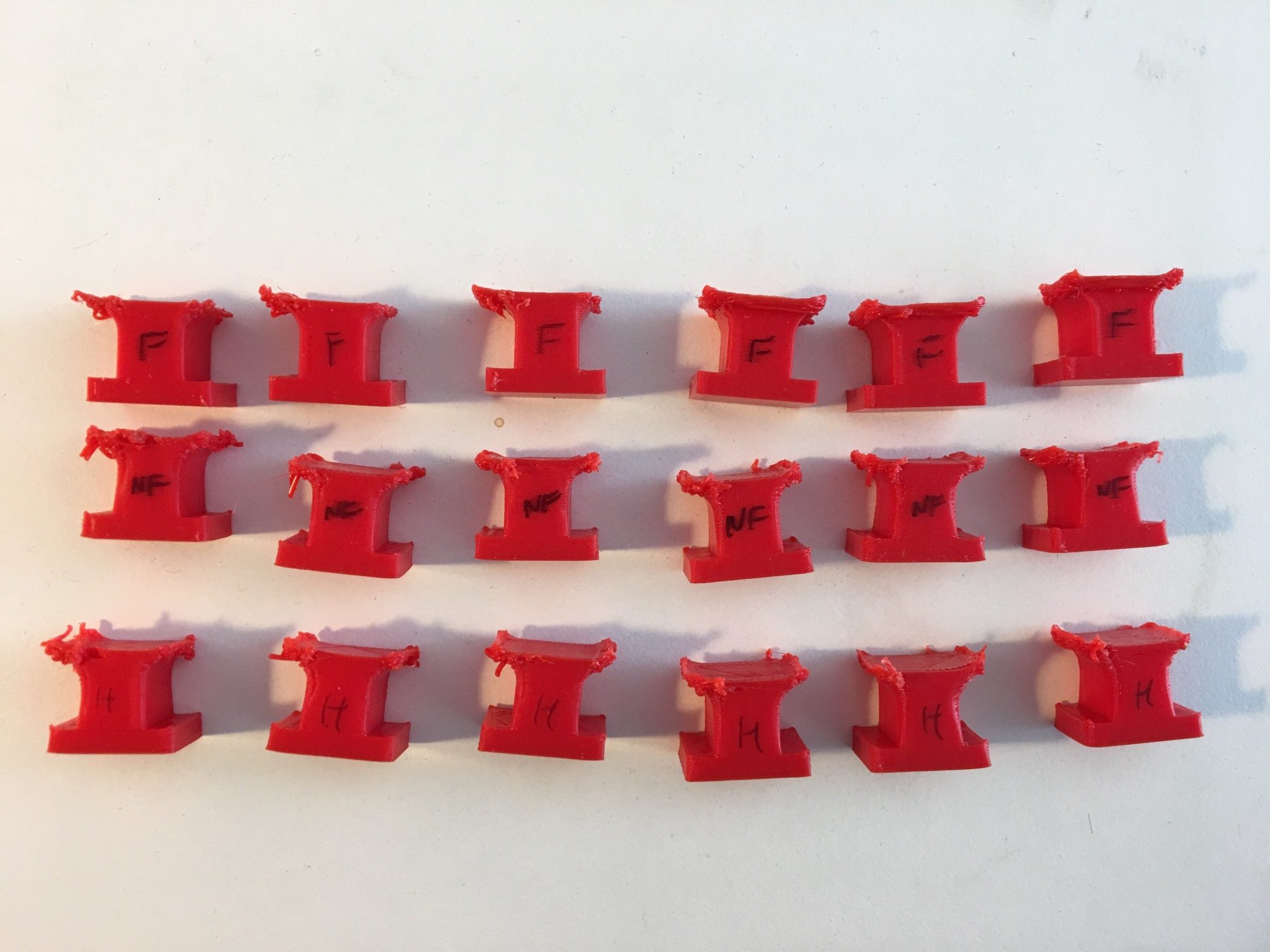One of the early improvements I added to Squirty was a ducted fan to blow air on the plastic just after extrusion. The aim of the fan is to cool the plastic more quickly and to provide better bridging performance. I measured the improvement in bridging with a ducted fan in an old post. I’ve always assumed that just as a fan improves bridging, it should also improve overhang performance. After all, an overhang is just half a bridge. However some recurrent print failures made me suspect that a fan actually makes overhang performance worse. In this post I’ll describe an investigation that suggests I should turn off fan for overhangs, or at least for arch shaped overhangs.
The investigation was prompted by recurrent failures I experienced trying to print the RepRap Huxley x motor holder. The print would often fail around the top of two arched tunnels in the plastic which allow the x carriage belt to pass through the motor holder. Typically, I would find that the print had shifted layers immediately after the layers that closed the arches. I watched a print around this point and found that there was a lot of upward curl of the plastic as the printer built the overhang of the arch, and that the curl could become so extreme that the nozzle would collide with the upturned plastic and stall the motor, causing layers to become shifted.
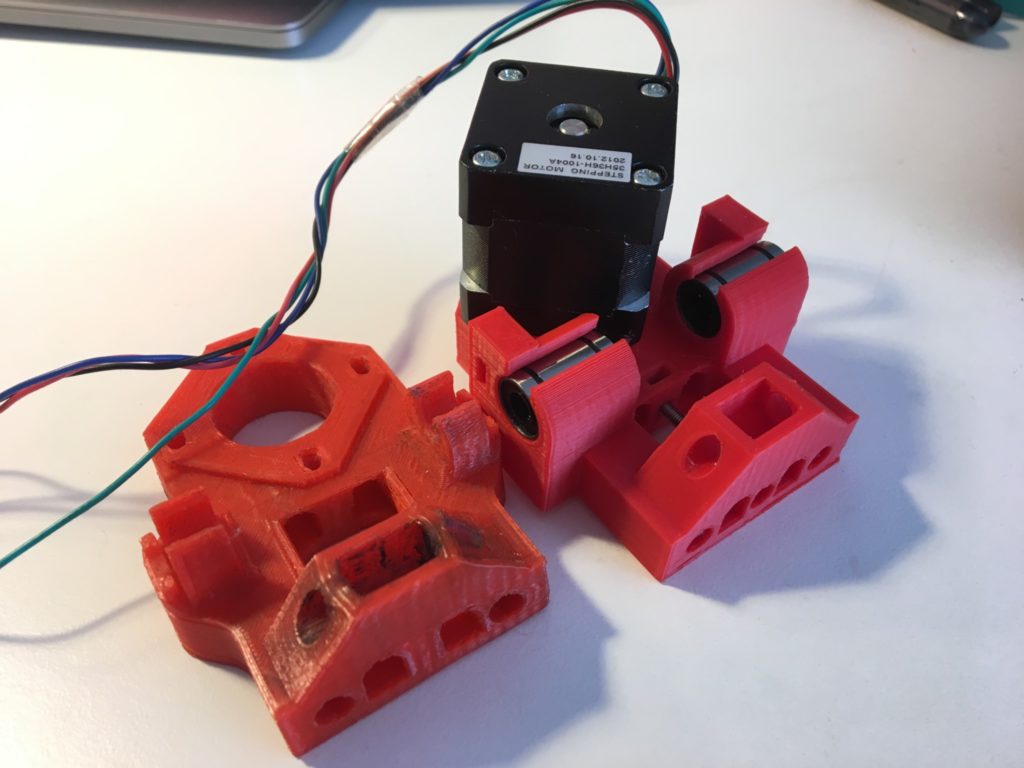
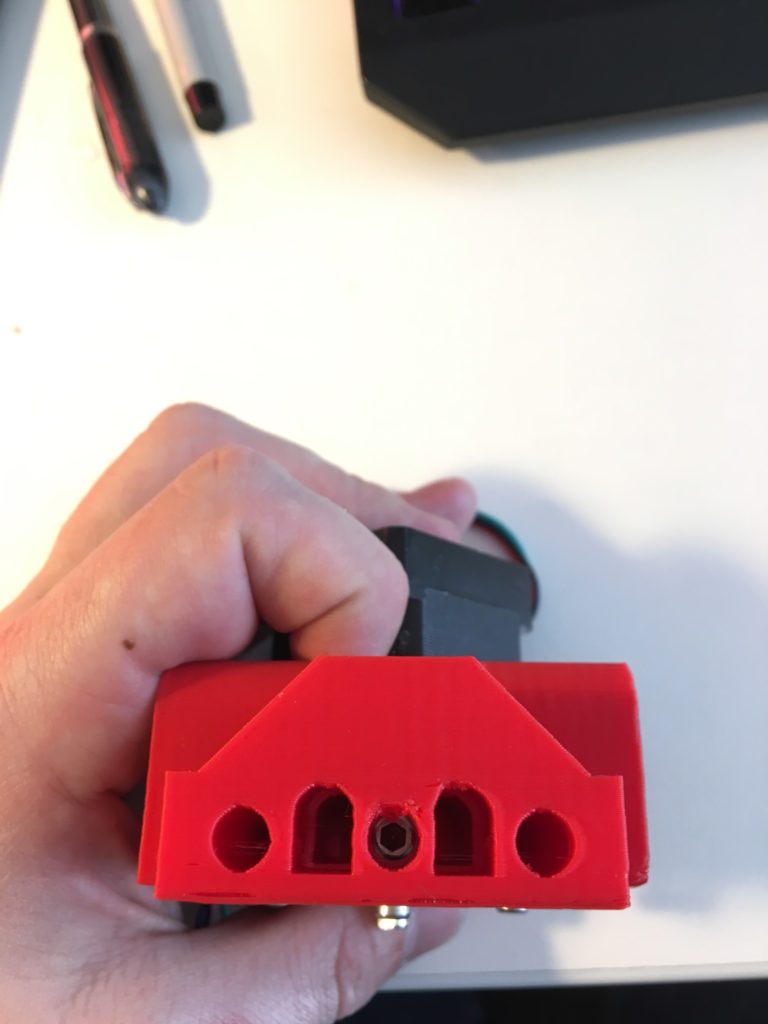
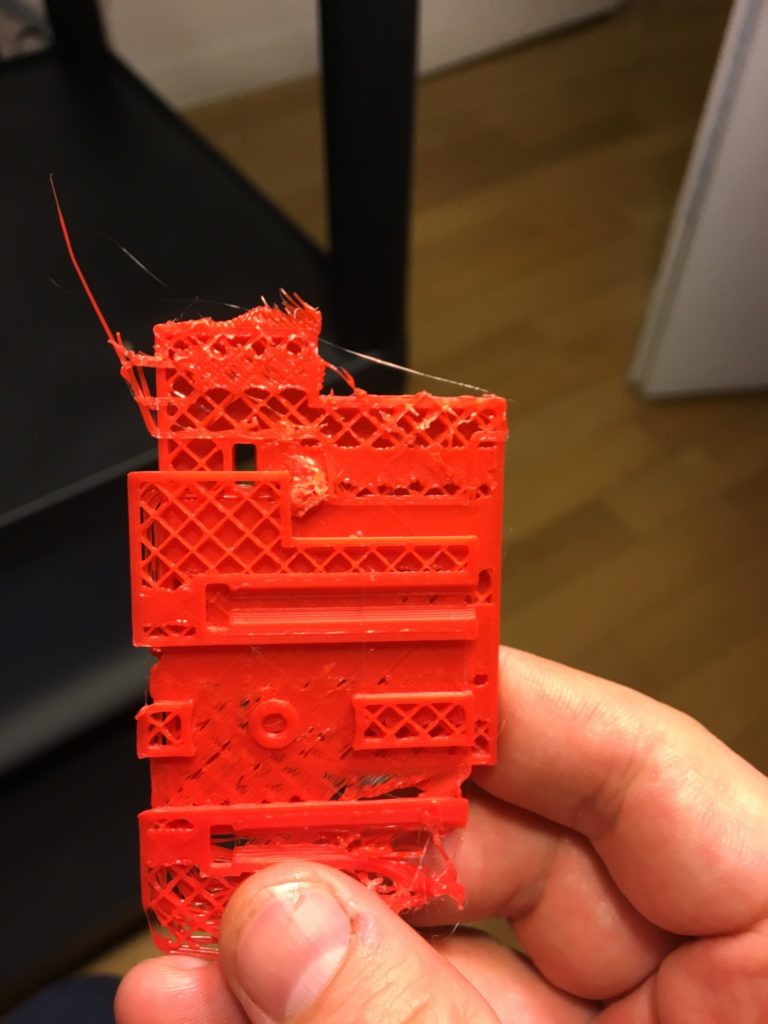
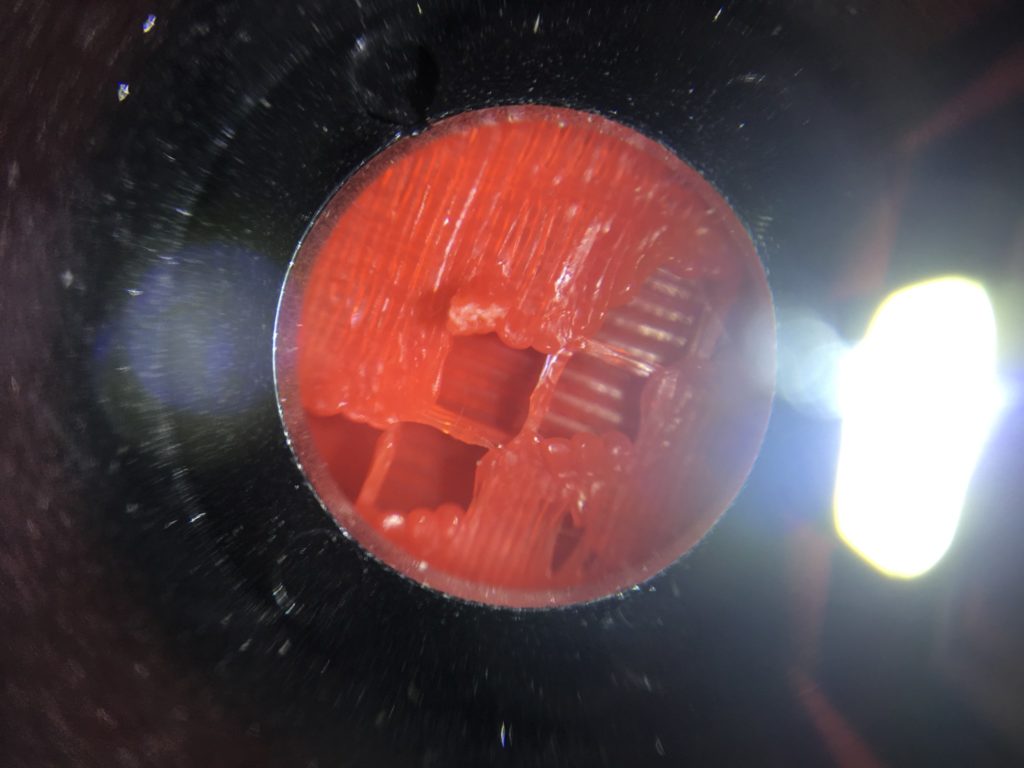
I investigated what the cause of curl on overhangs was but didn’t find good answers online. Suggestions I saw (e.g. here) were decreasing the hotend temperature and adding more cooling fan. I decreased the hotend temperature as much as I could, but still got the issue.
I then started thinking about what physical mechanism could cause the curl. A curl could be caused by the top part of a layer contracting more than the bottom part. Thinking some more about this mechanism, it occurred to me that if the top surface of the layer cooled quickly but the bottom part cooled slowly the top surface would contract and solidify while the bottom layer stayed hot and compliant. That difference in contraction could cause the curling effect that I was seeing. A potential reason why this would occur at an overhang is that at the point that the layer extends into space there is no adhesion with a layer below. If the adhesion effect from the layer below existed it would pull the bottom surface of the just-printed layer down and resist curl.
I would expect the top surface of a layer to cool faster than the bottom surface in all cases because the bottom surface is close to the warm body of the print (and the heated bed) and also because convection will carry heat away from the top surface faster than on the bottom surface of a layer jutting out into the air. However, a ducted fan would increase the rate at which the top surface would cool. Could the ducted fan be making my overhang curl worse instead of better?
To test whether this is the case I sliced out the problematic part of the x motor holder to make an overhang test piece and did three sets of prints. For each set, I printed six copies of the overhang test – 3 oriented along the x axis and three along the y axis. In the first set I used my standard 100% fan setting. In the second I used no fan, and in the third I covered the printer with a perspex case and also turned the room heating up all the way to get a in-case temperature of about 35 degrees Celsius. The objective for the third set was to see whether slower cooling overall (due to a higher ambient temperature) would reduce overhang curl.


Second row are with no fan “NF”
Third row were with the environment as hot as I could get it (around 35 C)
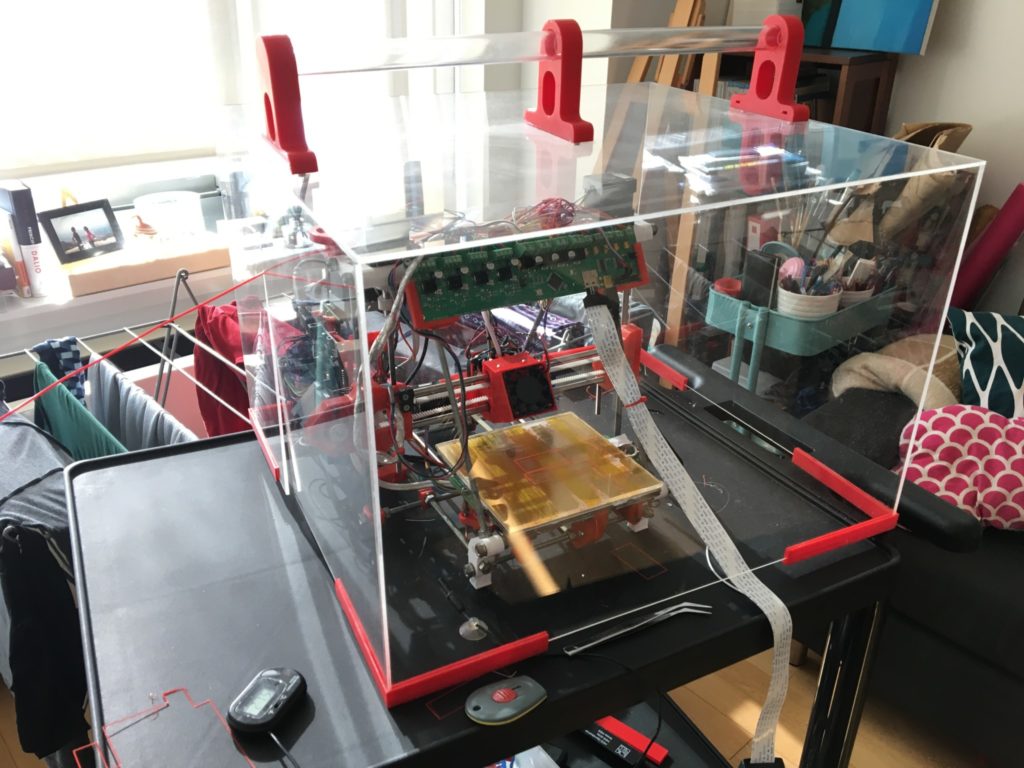
The first set (labelled “F” for fan) failed in the method I had seen on the original model. The curl became so severe that it stalled the motors and I got a shifted layer. You can see in the photograph that the top layers are shifted to one side on three of the prints. In the other three the layer is shifted towards the camera.
The second set (labelled “NF” for no fan) still had overhang curl, but it was not so severe that is caused a motor stall! Interestingly though both these and the heated test set had worse “curl” at the corners on the non-overhang portion.
The third set (labelled “H” for heated) did not have any noticeable difference from the second set.
My conclusion from this experiment is that for overhangs I should turn the fan off, which initially seemed counterintuitive. It may be that other people have a better fan design, such that the fan is effective enough to cool the whole layer so rapidly that no curl occurs. With my setup at least, the cooling differential added by the fan increases curl from being at levels where it is “just ugly” to levels where it will cause the print to fail.
The fan does stop the corners on non-overhangs from curling up – I’m not sure what the mechanism is here, but the result fits with initial heuristic that ducted fans generally improve print quality.
